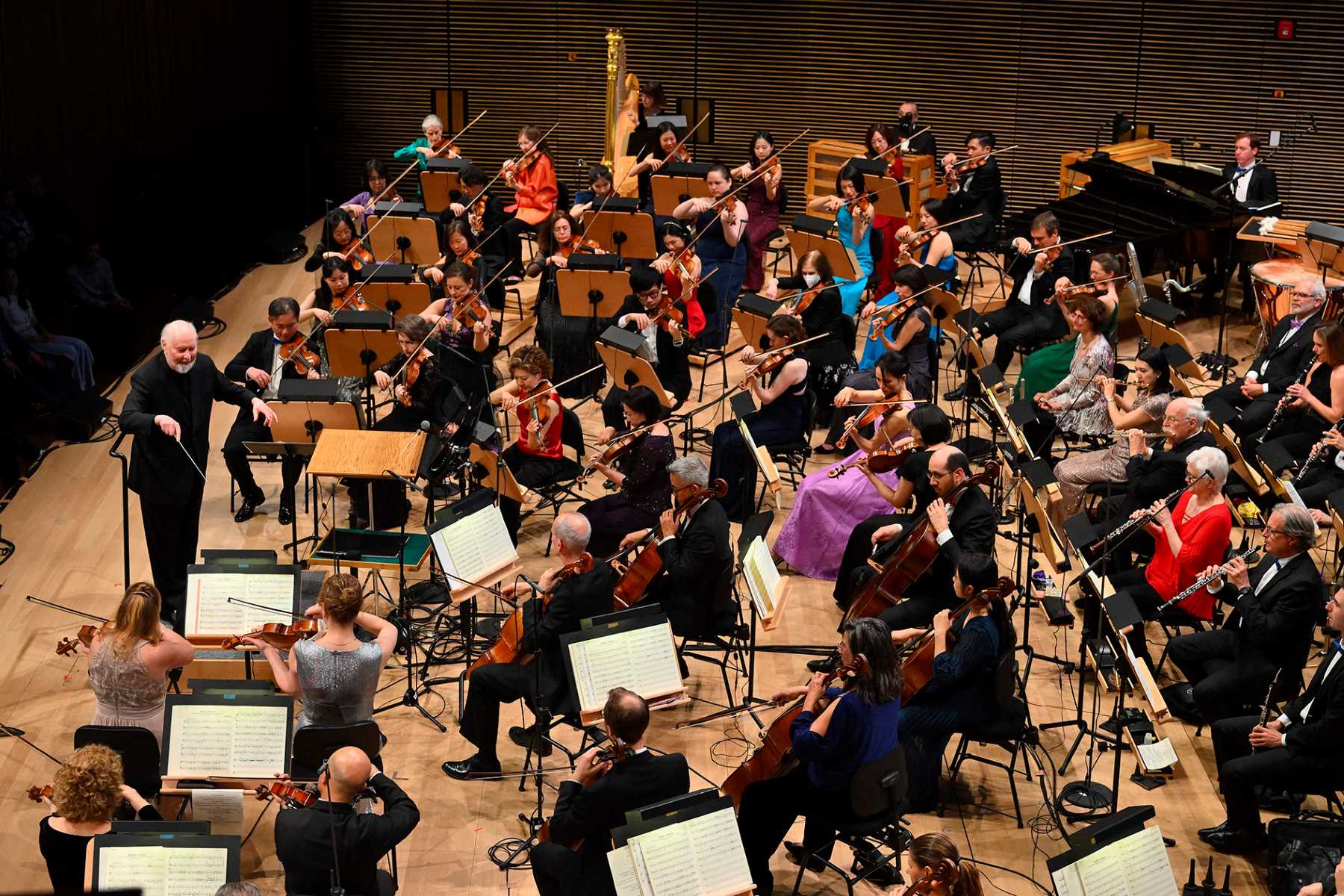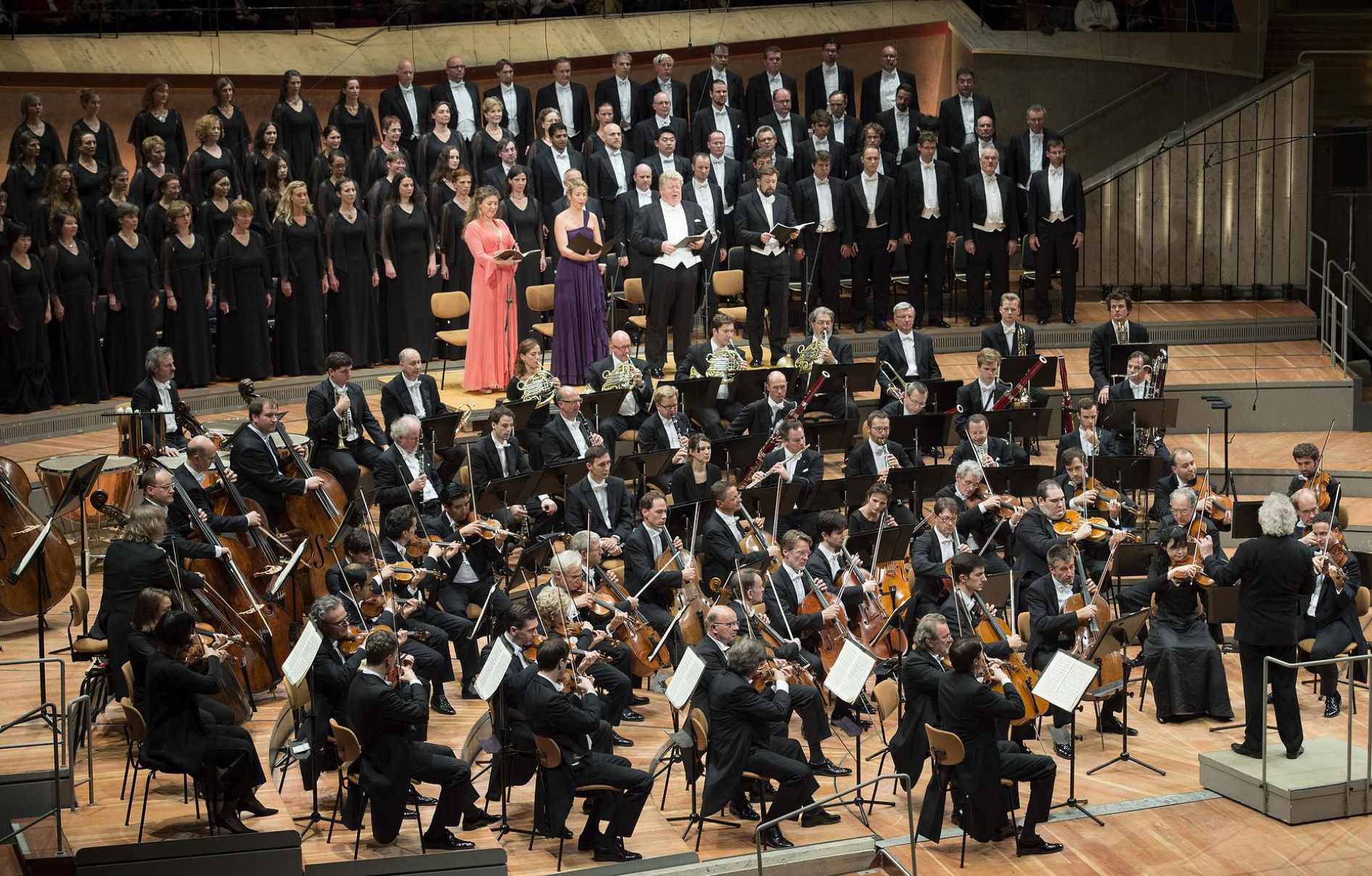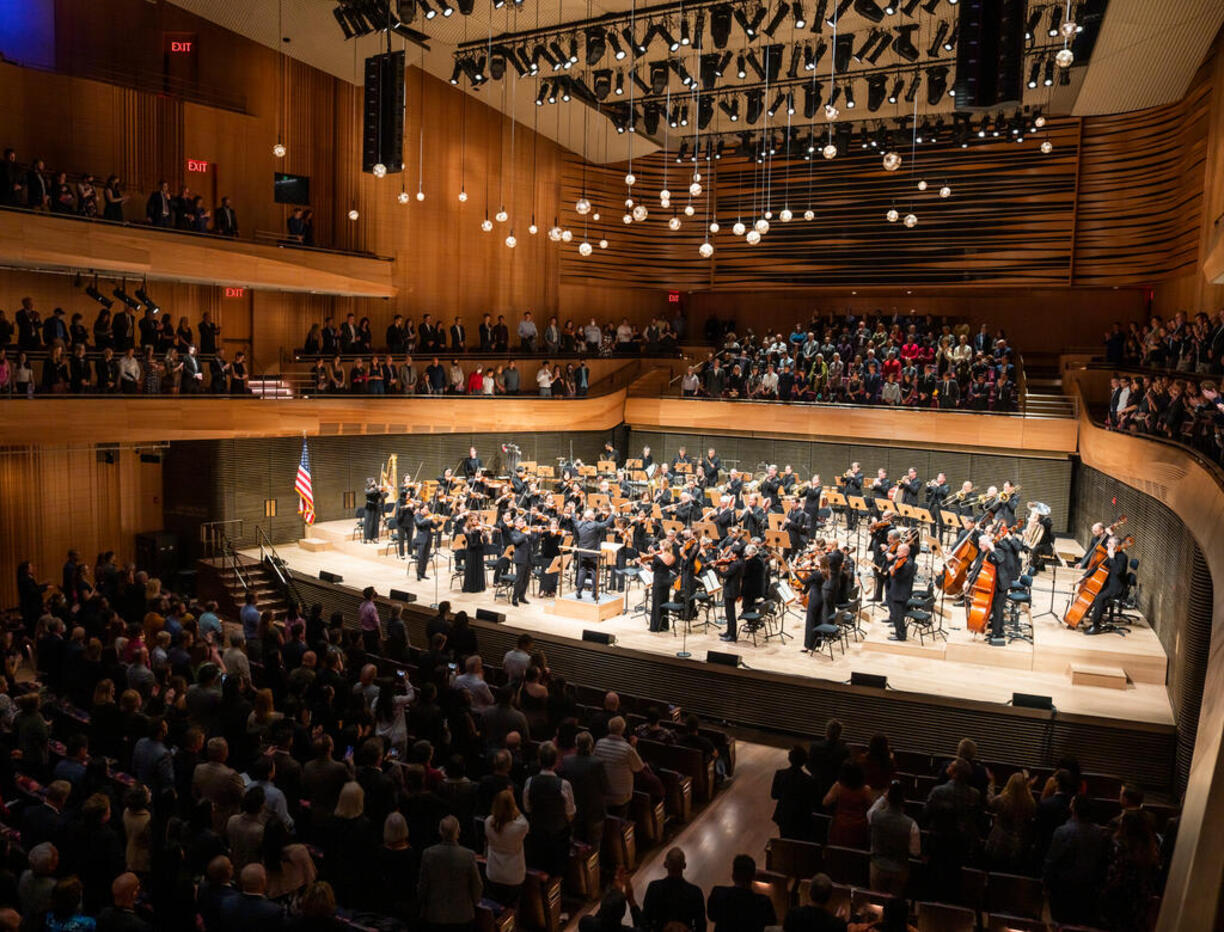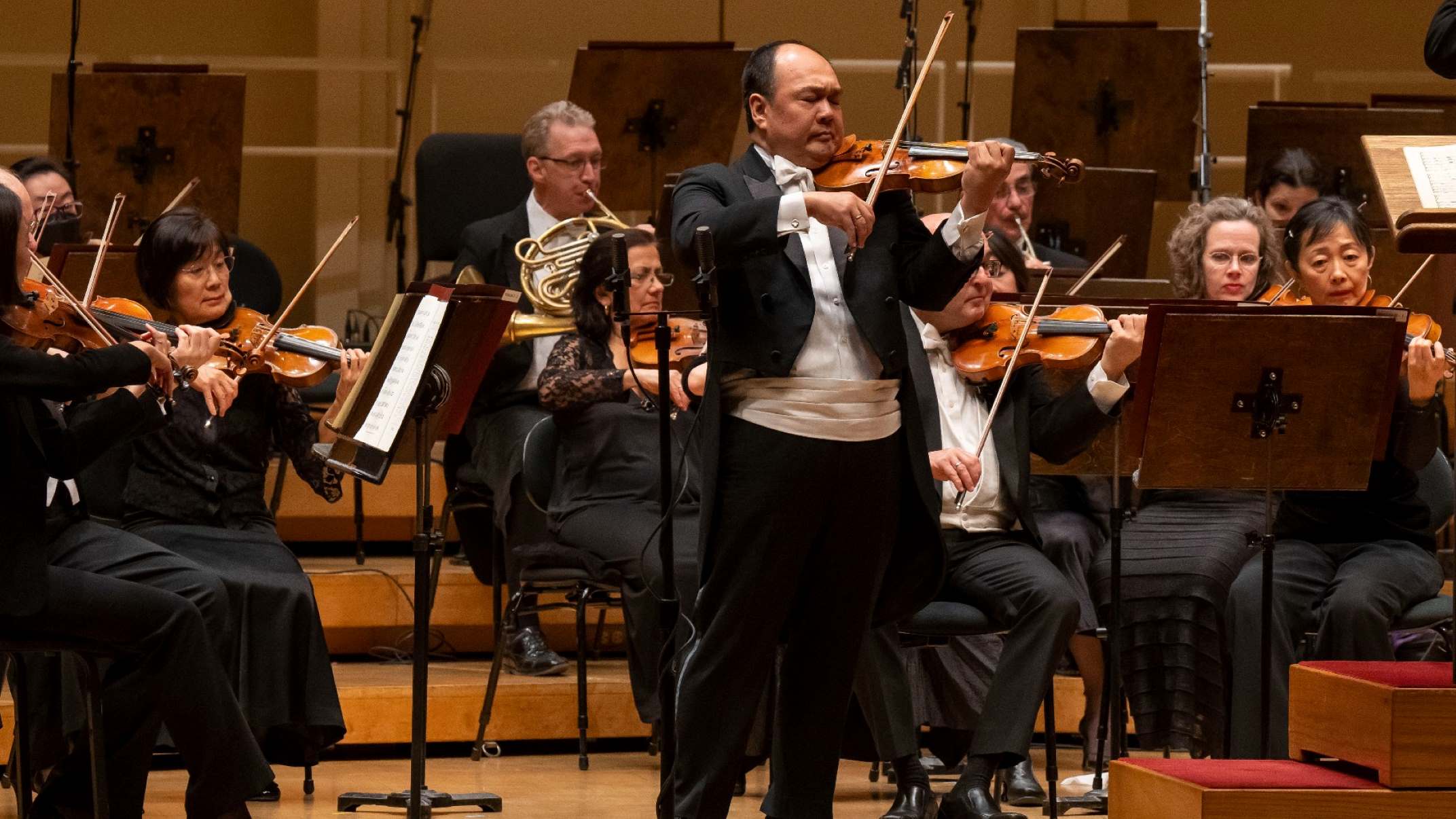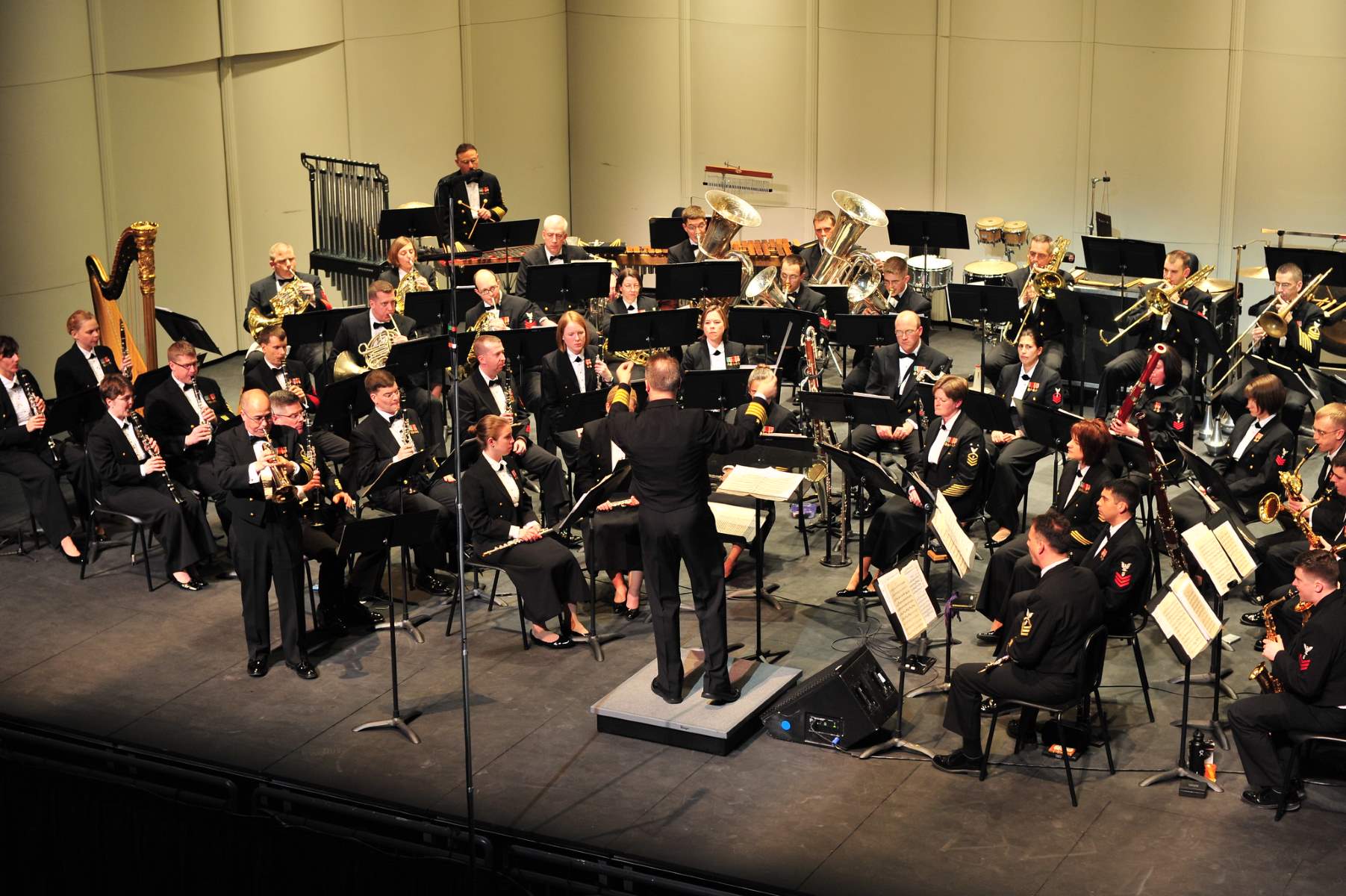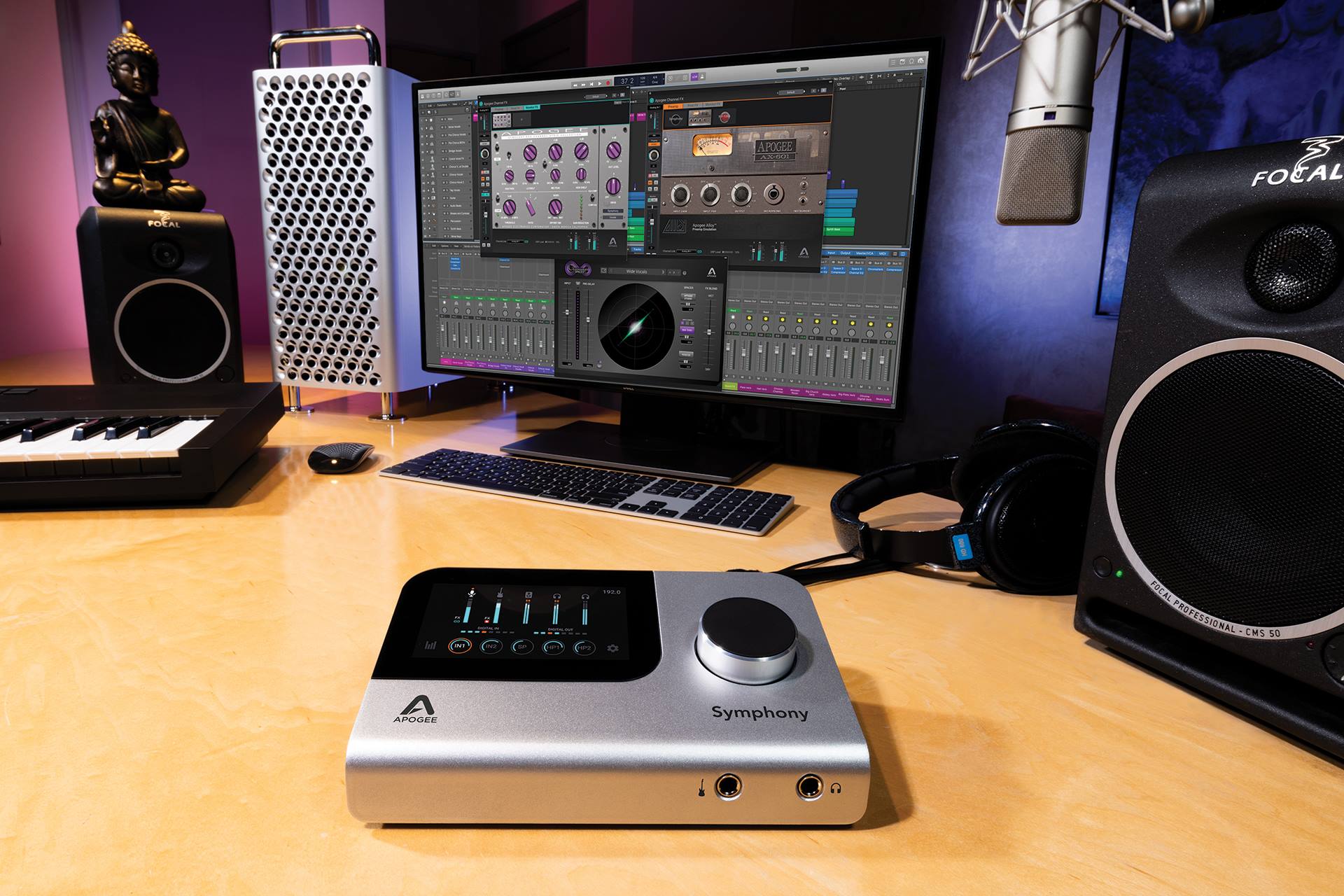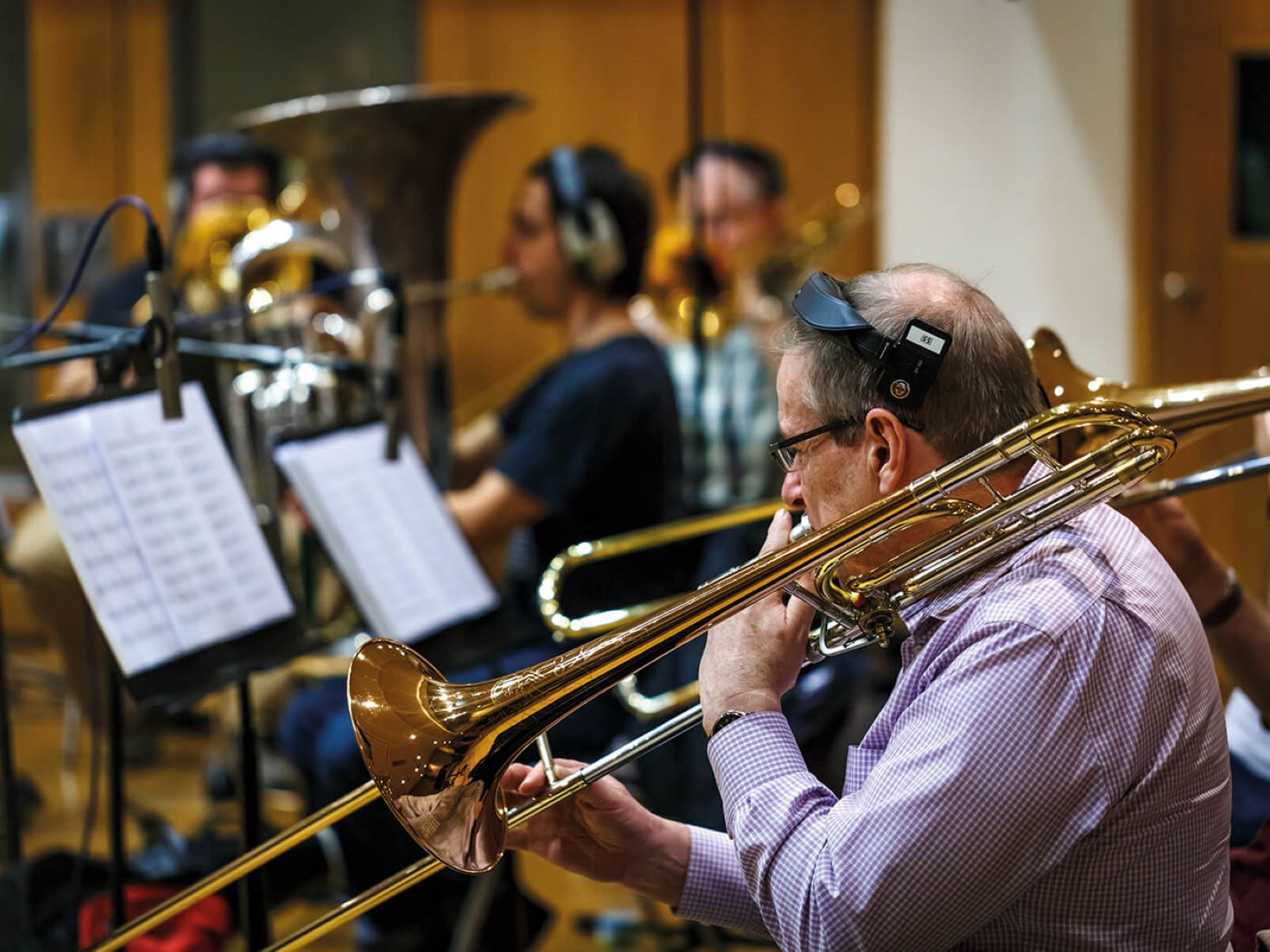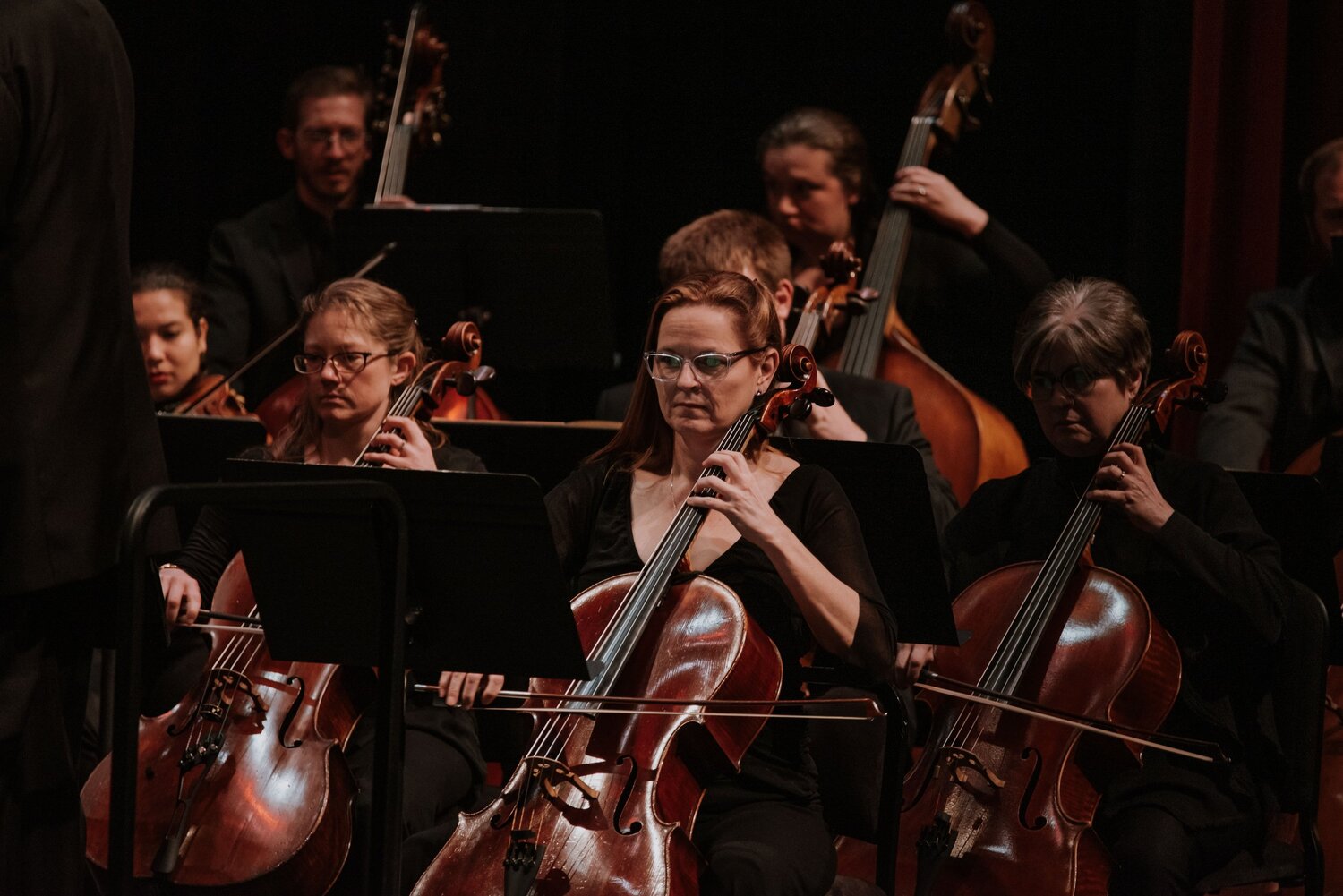

Symphony
How To Use Bbc Symphony Orchestra
Modified: February 24, 2024
Learn how to use the BBC Symphony Orchestra and immerse yourself in the world of symphony music. Discover tips, techniques, and resources to enhance your symphony experience.
(Many of the links in this article redirect to a specific reviewed product. Your purchase of these products through affiliate links helps to generate commission for AudioLover.com, at no extra cost. Learn more)
Table of Contents
- Introduction
- Understanding the BBC Symphony Orchestra
- Equipment and Software Requirements
- Installing and Setting Up the BBC Symphony Orchestra
- Navigating the User Interface
- Loading and Managing Instruments
- Playing and Recording with the BBC Symphony Orchestra
- Exploring the Sound Library
- Advanced Features and Tips
- Troubleshooting and FAQs
- Conclusion
Introduction
Welcome to the world of the BBC Symphony Orchestra! Whether you are a seasoned musician, a composer, or just a music enthusiast, the BBC Symphony Orchestra is a remarkable tool that allows you to bring the power and beauty of an orchestral performance into your own projects. With its vast selection of instruments, high-quality sound samples, and intuitive interface, the BBC Symphony Orchestra is a must-have for anyone looking to add depth and authenticity to their compositions.
In this article, we will explore how to use the BBC Symphony Orchestra to its fullest potential. We will discuss the equipment and software requirements, walk you through the installation and setup process, and guide you in navigating the user interface. We’ll also cover how to load and manage different instruments, as well as demonstrate how to play and record with the orchestra.
Furthermore, we’ll delve into the extensive sound library that the BBC Symphony Orchestra provides, ensuring you have access to a wide range of expressive and realistic musical elements. We’ll also highlight some advanced features and share tips and tricks to help you harness the orchestra’s capabilities to create breathtaking compositions.
If you encounter any issues along the way or have questions about specific functionalities, we’ll address common troubleshooting scenarios and provide helpful answers to frequently asked questions.
By the end of this article, you’ll have a solid understanding of how to use the BBC Symphony Orchestra and be well on your way to creating captivating musical arrangements that rival those of a real-life symphony.
Understanding the BBC Symphony Orchestra
The BBC Symphony Orchestra is a virtual instrument plugin developed by Spitfire Audio in collaboration with the BBC. It is designed to recreate the rich and vibrant sound of a full symphony orchestra, allowing users to produce professional-quality orchestral music right from their computer.
With the BBC Symphony Orchestra, you have access to a wide variety of meticulously sampled instruments, including strings, woodwinds, brass, and percussion. Each instrument is recorded in great detail, capturing their unique timbre and articulations to provide a convincing and authentic performance. This level of detail allows you to create realistic compositions that sound like they were recorded by a live orchestra.
One of the standout features of the BBC Symphony Orchestra is its ability to replicate different playing styles and techniques. Whether you want to capture the soaring melodies of a violin, the powerful brass fanfares, or the delicate nuances of a flute, the orchestra offers a comprehensive range of articulations and dynamic control to bring your compositions to life.
It’s worth noting that the BBC Symphony Orchestra is a resource-intensive plugin, requiring a fairly powerful computer to run smoothly. Make sure to check the system requirements and ensure that your computer meets or exceeds them to guarantee optimal performance.
In addition to the individual instruments, the BBC Symphony Orchestra also provides ensemble patches that combine multiple instruments, accurately simulating the sound of a full orchestra in one convenient package. This allows you to easily create grand and majestic orchestral arrangements without the need for extensive track layering.
Whether you are a composer working on film or video game scores, a producer looking to add orchestral elements to your music, or simply someone who enjoys creating orchestral arrangements, the BBC Symphony Orchestra is a powerful tool that opens up a world of possibilities.
In the next section, we will explore the equipment and software requirements needed to run the BBC Symphony Orchestra smoothly.
Equipment and Software Requirements
Before using the BBC Symphony Orchestra, it’s important to ensure that your equipment and software meet the necessary requirements to ensure optimal performance. Let’s take a look at what you’ll need:
1. Computer: You’ll need a computer with sufficient processing power and memory to handle the demands of the BBC Symphony Orchestra. A multi-core processor and a minimum of 16GB of RAM are recommended to avoid performance issues.
2. Operating System: The BBC Symphony Orchestra is compatible with both Windows and macOS operating systems. Make sure you have the latest version installed.
3. Digital Audio Workstation (DAW): You’ll need a DAW to host the BBC Symphony Orchestra plugin. Popular DAWs such as Ableton Live, Logic Pro, and Cubase are all compatible. Ensure that your DAW is up to date with the latest version.
4. MIDI Controller: While not mandatory, a MIDI controller can greatly enhance your experience with the BBC Symphony Orchestra. It allows you to play the instruments more expressively and intuitively. Choose a controller that suits your preferences and budget.
5. Internet Connection: To download and activate the BBC Symphony Orchestra, you’ll need a stable internet connection. This also allows you to access any updates or additional content provided by Spitfire Audio.
6. Hard Drive Space: The BBC Symphony Orchestra requires a significant amount of storage space, as the sample library can be quite large. Make sure you have enough space available on your hard drive to install and store the instrument.
It’s always a good practice to check the official system requirements provided by Spitfire Audio for detailed recommendations specific to your operating system and DAW.
By following these equipment and software requirements, you’ll ensure a smooth and seamless experience while working with the BBC Symphony Orchestra. In the next section, we’ll guide you through the installation and setup process.
Installing and Setting Up the BBC Symphony Orchestra
Installing the BBC Symphony Orchestra is a straightforward process. Follow these steps to get started:
- Visit the Spitfire Audio website and purchase the BBC Symphony Orchestra plugin. Once purchased, you’ll receive a download link and activation code.
- Download the installer file from the provided link. The size of the download can be substantial, so ensure that you have a stable internet connection and sufficient storage space on your computer.
- Once the download is complete, run the installer file and follow the on-screen instructions. Choose the appropriate installation location and select any desired options during the installation process.
- After the installation is complete, launch your DAW and navigate to the plugins section or the instrument track where you want to use the BBC Symphony Orchestra.
- Locate the BBC Symphony Orchestra plugin and load it onto the desired track. If you’re unsure how to load plugins in your specific DAW, refer to the user manual or online tutorials.
- Upon loading the plugin, you’ll be prompted to activate it using the provided activation code. Follow the activation process and ensure your computer is connected to the internet during this step.
- Once activated, the BBC Symphony Orchestra is ready to use. You can now explore the various instruments, articulations, and features within the plugin.
It’s important to keep the plugin and its associated content properly installed, organized, and backed up to ensure smooth operation in the future. You may need to periodically update the plugin and download any additional content or updates released by Spitfire Audio.
Consult the user manual and online resources provided by Spitfire Audio for more detailed instructions specific to your DAW and operating system.
Now that you have successfully installed the BBC Symphony Orchestra, we will move on to exploring the user interface and how to navigate it effectively in the next section.
Navigating the User Interface
The user interface of the BBC Symphony Orchestra is designed to be intuitive and user-friendly, allowing you to quickly navigate and access the wide range of instruments and features. Let’s explore the key aspects of the interface:
1. Main Control Panel: This is where you’ll find global controls for adjusting the overall volume, panning, and other basic parameters that affect the entire orchestra.
2. Instrument Browser: The instrument browser allows you to select and load individual instruments or ensemble patches. It provides a categorized list of instruments, making it easy to find the specific sound you’re looking for. You can also use the search function to quickly locate instruments by name or type.
3. Articulation Controls: Once you’ve loaded an instrument, the articulation controls section provides options to select different playing styles, techniques, and expressions. This allows you to customize the sound of each instrument to match your musical intentions.
4. Dynamic and Expression Controls: With the dynamic and expression controls, you can adjust the volume and intensity of the instrument’s performance, as well as add expression through techniques such as vibrato or legato. These controls enable you to shape the dynamics and emotions of your compositions.
5. Effects and Mixing: The BBC Symphony Orchestra also provides a range of built-in effects and mixing controls. You can apply reverb, EQ, and other effects to add depth and space to your orchestral sound. The mixing controls allow you to adjust the individual instrument levels and stereo panning, giving you full control over the spatial positioning of each instrument within the orchestra.
6. MIDI Mapping: The plugin supports MIDI mapping, allowing you to assign specific parameters and controls to your MIDI controller. This enables you to perform and manipulate the orchestra in real-time while playing your MIDI controller.
Take the time to familiarize yourself with the various sections and controls of the interface. Experiment and explore the different options available to fully understand the depth and capabilities of the BBC Symphony Orchestra.
Now that you have a good understanding of the user interface, let’s move on to loading and managing instruments in the next section.
Loading and Managing Instruments
One of the key features of the BBC Symphony Orchestra is its extensive library of instruments. The ability to load and manage these instruments effectively is essential for creating dynamic and expressive compositions. Let’s explore how to load and manage instruments within the plugin:
1. Instrument Browser: Start by accessing the instrument browser within the plugin’s user interface. This is where you can explore the different categories and types of instruments available.
2. Selecting an Instrument: Navigate through the instrument browser to find the specific instrument you want to load. You can filter instruments by category, such as strings, woodwinds, brass, or percussion, to narrow down your search. Click on the instrument to load it onto the track.
3. Loading Ensemble Patches: In addition to individual instruments, the BBC Symphony Orchestra also offers ensemble patches that combine multiple instruments to recreate the sound of a full orchestra. These can be a convenient and efficient way to add depth and richness to your compositions. Simply load the desired ensemble patch to activate it.
4. Unloading Instruments: If you want to unload an instrument from the track, locate the loaded instrument within the plugin’s interface and click on the ‘Unload’ or ‘X’ button associated with it. This will free up resources and allow you to load a different instrument if needed.
5. Managing Presets: The BBC Symphony Orchestra also provides presets that offer preconfigured settings for specific instruments or ensemble setups. You can save and manage your own presets for quick access in future projects. Use the preset management functions within the plugin to organize and recall your preferred settings.
It’s important to note that loading multiple instruments and ensemble patches can be resource-intensive. Keep an eye on your computer’s performance and consider freezing or bouncing tracks to free up processing power if necessary.
By effectively loading and managing instruments, you can easily create complex orchestrations and experiment with various instrument combinations to bring your musical vision to life. In the next section, we’ll explore how to play and record with the BBC Symphony Orchestra.
Playing and Recording with the BBC Symphony Orchestra
The BBC Symphony Orchestra is not only a powerful virtual instrument for composing, but it also allows you to play and record your performances in real-time. Here are some steps to get started:
1. MIDI Input Setup: Ensure that your MIDI controller is properly connected to your computer and configured to work with your DAW. Check your DAW’s preferences or settings to assign the MIDI controller to the BBC Symphony Orchestra plugin. This enables you to play the instruments using your MIDI controller.
2. Selecting the Instrument: Within the plugin’s interface, choose the instrument you want to play from the instrument browser. If you have already loaded an instrument, skip this step.
3. Articulations and Expressions: Explore the available articulations and expressions within the plugin to enhance the realism and playability of the instrument. Different playing techniques can be selected using the articulation controls, and expressiveness can be added using dynamics and expression controls.
4. Recording MIDI: Arm the track for recording within your DAW. Activate the record mode, and then play your MIDI controller to perform the desired melody or part. The MIDI information will be recorded onto the track, capturing your performance with the BBC Symphony Orchestra.
5. Editing MIDI Data: After recording, you can edit the MIDI data using your DAW’s MIDI editing tools. This allows you to refine the timing, velocity, and other parameters to achieve the desired musical expression. You can also make use of MIDI quantization and humanization techniques to further enhance the realism of your performance.
6. Mixing and Processing: Once you have recorded the MIDI performance, you can further refine the sound by applying effects, adjusting levels, and adding other processing as needed. Use the mixing controls within the BBC Symphony Orchestra plugin along with your DAW’s mixing capabilities to achieve the desired balance and sonic character.
7. Exporting the Final Composition: After editing and mixing your performance, finalize your composition by exporting it to a high-quality audio file format. This allows you to share your music or incorporate it into your projects, such as film scores or game soundtracks.
By playing and recording with the BBC Symphony Orchestra, you can bring your compositions to life with expressive performances and capture the essence of a live orchestra. In the next section, we’ll dive into the extensive sound library provided by the orchestra.
Exploring the Sound Library
The sound library of the BBC Symphony Orchestra is a treasure trove of possibilities, offering a vast collection of meticulously sampled instruments and articulations. Let’s delve into the various aspects of the library and how it can enhance your compositions:
1. Instrument Categories: The sound library covers a wide range of instrument categories, including strings, woodwinds, brass, and percussion. Each category includes a comprehensive selection of instrument types and variations, giving you access to a rich palette of sounds to work with.
2. Articulations: Within each instrument, you’ll find a variety of articulations and playing techniques. From staccatos and legatos to trills and pizzicatos, the library provides an extensive range of articulations that allow you to create expressive and realistic performances. Experimenting with different articulations can add depth and authenticity to your compositions.
3. Dynamic Layers: The BBC Symphony Orchestra sound library captures multiple dynamic layers for each instrument, allowing for nuanced and expressive performances. These layers respond to the velocity and intensity of your playing, ensuring that your compositions sound dynamic and natural.
4. Round-Robin Variations: To avoid repetitive and mechanical-sounding notes, the library incorporates round-robin variations. This means that multiple samples are recorded for each note, and the software randomly selects and alternates between them to create a more organic and human-like sound.
5. Mixing and Mic Positions: The sound library includes multiple microphone positions and mixing options, providing you with flexibility in shaping the sound and creating a customized mix. You can adjust the balance, stereo width, and even apply individual effects to each microphone position. This allows you to craft a unique sonic character for your compositions.
6. Expressive Techniques: In addition to the standard articulations, the sound library also includes expressive techniques such as vibrato, tremolo, and glissando. These techniques add another layer of realism and emotional depth to your compositions, allowing you to evoke specific moods and feelings through your music.
Exploring the sound library of the BBC Symphony Orchestra opens up a world of possibilities for your compositions. Take the time to experiment with different instruments, articulations, and techniques to discover the full potential of this remarkable orchestral instrument.
In the next section, we’ll delve into advanced features and share some tips and tricks to help you maximize your use of the BBC Symphony Orchestra.
Advanced Features and Tips
The BBC Symphony Orchestra offers advanced features and hidden gems that can elevate your compositions to new heights. Let’s explore some of these features and share valuable tips and tricks to enhance your experience:
1. Key Switching: Key switching allows you to switch between different articulations or playing techniques in real-time using specific keys on your MIDI controller. Familiarize yourself with the key switch mapping provided by the BBC Symphony Orchestra, as it can significantly increase your workflow efficiency and enable seamless transitions between articulations.
2. MIDI Expression Mapping: Take advantage of MIDI expression mapping capabilities within your DAW to assign MIDI controls to parameters such as dynamics, vibrato, or expression. This gives you precise control over the nuances of the performance and allows for dynamic interpretation while playing or recording.
3. Customizable Templates: Create your own templates and presets within the BBC Symphony Orchestra to streamline your workflow. Save your preferred instrument combinations, mixer settings, and effects chains as templates, allowing you to quickly access your preferred setups for different types of compositions.
4. Layering and Blending: Experiment with layering different instruments within the BBC Symphony Orchestra to create unique and complex textures. Combining instruments from different categories, such as strings and woodwinds, can add richness and depth to your compositions. Use the blending controls and effects within the plugin to finesse the blend and create cohesive sonic blends.
5. Automation and Expression: Make use of automation to add dynamic and expressive changes throughout your compositions. Automating parameters such as expression, vibrato intensity, or articulation switches can inject emotion and movement into your music. Experiment with gradual changes and sudden accents to create dramatic and compelling musical moments.
6. Experiment with Mic Positions: The BBC Symphony Orchestra offers different microphone positions, allowing you to shape the sound and ambience of your virtual orchestra. Instead of using a single microphone position, try blending multiple mic positions to achieve a more expansive and realistic sound. Adjust the individual levels and stereo positioning of each microphone to create a personalized and immersive listening experience.
7. Collaboration and Expression Variation: If you’re using the BBC Symphony Orchestra in collaboration with other composers or musicians, encourage them to add their unique artistic input by exploring different variations of expression and interpretation. This can lead to more diverse and engaging musical outcomes.
Remember, experimentation is key. Don’t be afraid to try new techniques, layering ideas, and unconventional sound combinations to create your own signature sound with the BBC Symphony Orchestra. Embrace the tools and advanced features to unleash your creativity and create truly breathtaking orchestral compositions.
In the next section, we’ll address common troubleshooting scenarios and provide answers to frequently asked questions.
Troubleshooting and FAQs
While working with the BBC Symphony Orchestra, you may encounter certain issues or have questions about the plugin. Let’s address some common troubleshooting scenarios and answer frequently asked questions:
1. The plugin is not loading properly: If you experience issues with the plugin not loading or crashing, ensure that you have met the system requirements mentioned earlier. Try reinstalling the plugin and make sure all necessary software components are up to date.
2. Audio glitches or latency: If you notice audio glitches or latency while playing or recording with the BBC Symphony Orchestra, consider increasing your audio buffer size in your DAW’s preferences. This can help alleviate processing issues and improve overall performance.
3. Missing articulations or instruments: If you are unable to find certain articulations or instruments within the plugin, check if you have installed all the necessary content. Make sure your library is up to date by downloading any available updates or expansions from the Spitfire Audio website.
4. Activation or authorization issues: If you encounter problems during the activation or authorization process, double-check that you have a stable internet connection. Ensure that you have correctly entered your activation code and follow any additional instructions provided by Spitfire Audio’s activation process.
5. Low volume or inconsistent sound: If you notice that certain instruments or articulations are quieter or lack consistency in volume, check if you have adjusted the dynamic layers or expression controls appropriately. Additionally, ensure that your MIDI controller is transmitting velocity data accurately.
6. Can I use the BBC Symphony Orchestra for commercial projects? Yes, you can use the BBC Symphony Orchestra in commercial projects. However, be sure to familiarize yourself with the licensing terms and conditions provided by Spitfire Audio for any specific limitations or requirements.
7. Can I use the BBC Symphony Orchestra on multiple machines? The BBC Symphony Orchestra license typically permits installation and use on multiple machines, as long as you are the sole user of the plugin. Verify the specifics of your license to ensure compliance.
If you encounter any issues that are not covered above or require further assistance, refer to the official documentation and support resources provided by Spitfire Audio. Their website and user forums are valuable sources of information for troubleshooting and finding solutions to specific problems.
Remember, patience and persistence are key when troubleshooting. With the right resources and support, you’ll be able to overcome any hurdles and make the most out of your experience with the BBC Symphony Orchestra.
Finally, in the concluding section, we’ll wrap up our discussion and summarize the key points covered in this article.
Conclusion
The BBC Symphony Orchestra is a remarkable virtual instrument plugin that brings the power, beauty, and authenticity of a full symphony orchestra right to your fingertips. With its extensive library of instruments, expressive articulations, and intuitive user interface, this plugin opens up endless possibilities for composers, producers, and music enthusiasts.
In this article, we covered the essentials of using the BBC Symphony Orchestra, from understanding the instrument and its features to navigating the user interface and loading instruments. We explored advanced techniques such as key switching, MIDI expression mapping, and blending mic positions to create unique and realistic orchestral compositions.
We also addressed potential troubleshooting scenarios and answered common questions to help you overcome any issues you may encounter. It’s important to refer to the official documentation and support resources provided by Spitfire Audio for specific guidance tailored to your needs.
By harnessing the power of the BBC Symphony Orchestra, you have the ability to create breathtaking compositions in various genres, whether it’s film scoring, classical compositions, or immersive game soundtracks. The plugin’s attention to detail and dedication to capturing the essence of a live orchestra allows you to achieve professional-quality results right from your computer.
As you continue your musical journey with the BBC Symphony Orchestra, remember to embrace experimentation, unleash your creativity, and explore the depths of its sound library. Don’t be afraid to push boundaries and try new techniques to create your own unique sonic landscapes.
With dedication, practice, and a keen artistic vision, the BBC Symphony Orchestra can become an invaluable tool in your musical arsenal, enabling you to create compositions that captivate and inspire your audience.
So, go ahead and embark on your orchestral adventure with the BBC Symphony Orchestra. Let your imagination soar and orchestrate musical masterpieces that will resonate with listeners for years to come.


